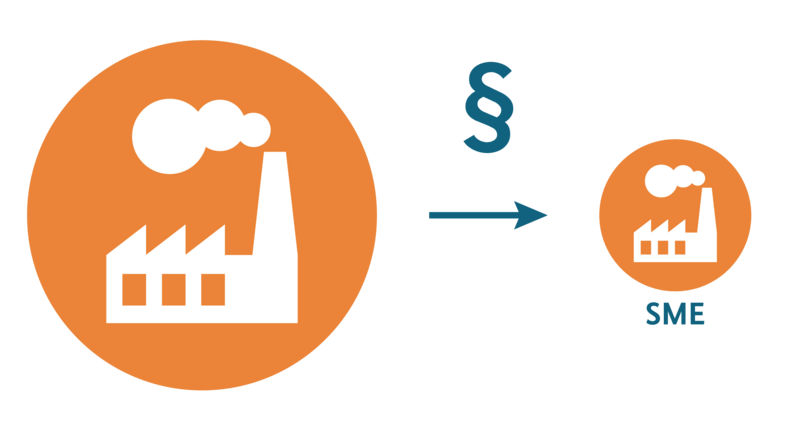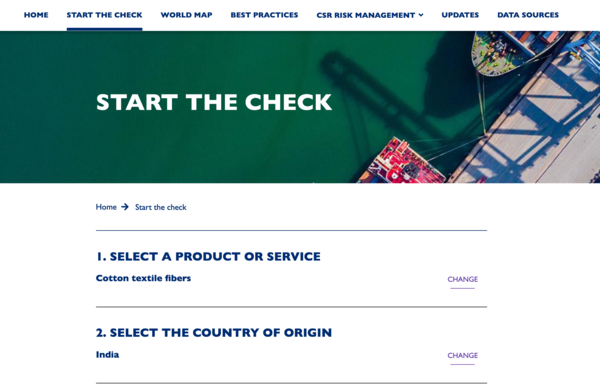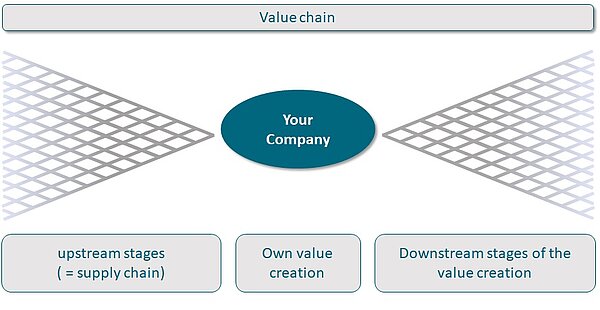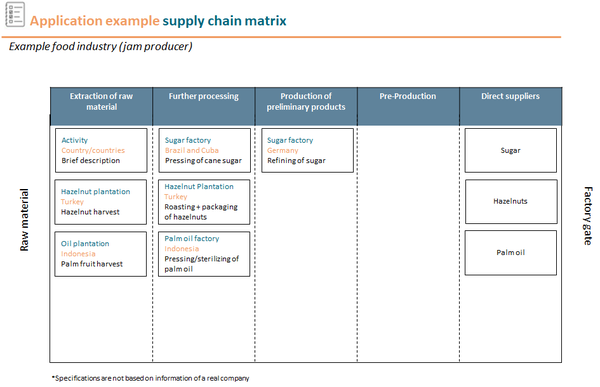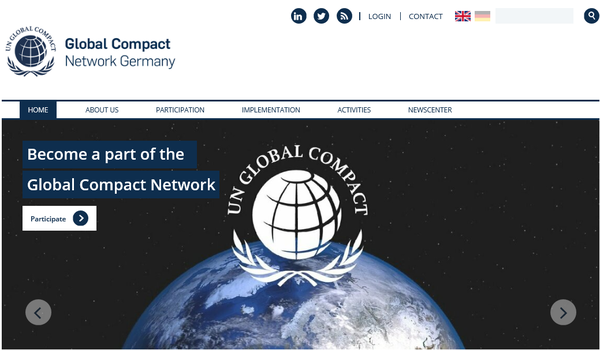The Due Diligence in Supply Chains Act does not create obligations for SMEs. Obliged companies often turn towards their suppliers in order to fulfil their own obligations for example in the form of a "Code of Coduct". Obliged companies might ask their suppliers for information and ask for completing extensive questionnaires. To do this, you need a good understanding of your own supply chain.
Our Due Diligence Compass tool helps you understand your industry's risks and develop strategies to make your supply chain as robust as possible. Our second tool, the Standards Compass, gives you an overview of various sustainability certifications, seals and initiatives that support your due diligence processes.
